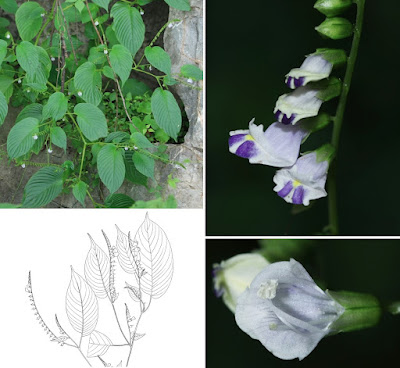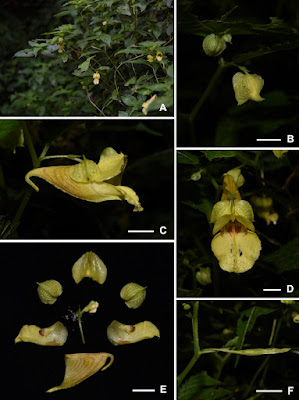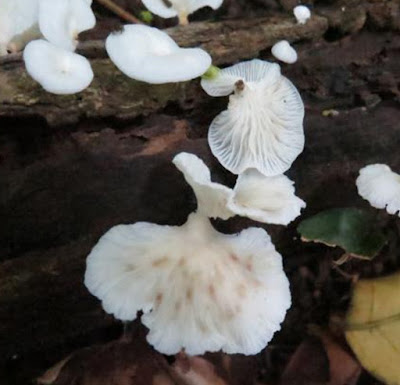 |
Rhynchoglossum ausculum Patthar. & Poopath in Pattharahirantricin et Poopath, 2021. |
ABSTRACT
The new species of Rhynchoglossum ausculum, from South-Western Thailand is described and illustrated. An emended key to the Thai species of Rhynchoglossum is provided.
Keywords: conservation, endemic, personate flower, Rhynchoglossum obliquum
 |
| Rhynchoglossum ausculum Patthar. & Poopath: A. habit; B. flowers; C. opened flower, with ventral part of corolla tube removed; D. ventral part of corolla tube; E. capsule. Photos by Manop Poopath. |
Rhynchoglossum ausculum Patthar. & Poopath, sp. nov.
Similar to Rhynchoglossum obliquum in its personate flower and white to pale purple corolla, but differs by having 4 fertile stamens, the lower lip having 2 bluish purple to dark blue patches, the ventral surface of the corolla tube having a pale yellow stripe from the middle of throat downwards, and in having several tufts of hairs in the tube (vs 2 fertile and 2 sterile stamens, only a white to yellow spot at the centre of the lower lip, and without tufts of hairs inside). It is also similar to Rhynchoglossum mirabilis and R. saccatum in its 4 fertile stamens, but differs by having the mouth of the corolla tube closed, the tube itself dilated and dorsoventrally compressed, and the lower and upper lips nearly equal(vs ringent corolla, tube dilated and not dorsoventrally compressed, lower lip longer than upper lip).
Ecology.— Shaded areas on limestone, mixed deciduous forest, 30–60 m elevation. Flowering and fruiting in October–November.
Etymology.— The specific epithet ‘ausculum’ refers to the appearance of the flower being like that of a human mouth, as the upper and lower lips are subequal.
Nannapat Pattharahirantricin and Manop Poopath. 2021. Rhynchoglossum ausculum (Gesneriaceae), A New Species from South-Western Thailand. Thai Forest Bulletin (Botany). 49(2), 157-162. DOI: 10.20531/tfb.2021.49.2.01














































